10 Best Herbal Baths For Gout

Herbal baths for gout involve soaking in warm water infused with specific herbs believed to reduce inflammation and alleviate joint pain.
Common herbs used include ginger, turmeric, and willow bark, all of which contain compounds with natural anti-inflammatory properties. These baths can help relax muscles, improve circulation, and provide temporary relief from the discomfort associated with gout flare-ups. While they are not a substitute for medical treatment, they may complement conventional therapies and support overall joint health.
It is important to consult a healthcare provider before using herbal baths, especially if you have underlying health conditions or are taking medications.
FREE Herb Drying Checklist
How to make sure every batch retains maximum flavor, color, and aroma without the risk of mold or over-drying. Eliminate guesswork and trial-and-error, making herb drying faster, easier, and more efficient every time.
Table of Contents
1. Urtica dioica

Urtica dioica, commonly known as stinging nettle, has been traditionally used in herbal baths for its potential anti-inflammatory and detoxifying properties, which may benefit individuals with gout.
When prepared as a herbal bath, stinging nettle can help reduce swelling and pain associated with gout by promoting circulation and easing joint inflammation. The leaves of Urtica dioica contain compounds such as silica and flavonoids that are believed to support the body's natural detoxification processes and alleviate uric acid buildup. To prepare a nettle bath, fresh or dried leaves are steeped in hot water and then used to soak the affected areas, often combined with Epsom salts for enhanced relief.
While herbal baths may offer complementary support, they should not replace medical treatment for gout, and it is advisable to consult a healthcare professional before incorporating them into a treatment plan.
2. Equisetum arvense

Equisetum arvense, commonly known as field horsetail, has been traditionally used in herbal baths for the management of gout due to its high concentration of silica and anti-inflammatory properties.
The silica in horsetail is believed to support joint health and may help reduce uric acid levels, which are a primary contributor to gout flare-ups. Herbal baths involving Equisetum arvense can be prepared by steeping the dried plant in hot water and then using the infused liquid to bathe affected areas, promoting circulation and easing pain. However, it is important to consult with a healthcare professional before using horsetail baths, as it may interact with certain medications or have side effects for some individuals.
Despite its historical use, scientific evidence supporting its efficacy for gout remains limited, and it should not replace conventional medical treatments.
3. Salvia officinalis

Salvia officinalis, commonly known as sage, has been traditionally used in herbal baths for its potential therapeutic benefits, particularly in managing symptoms associated with gout.
The essential oils and phytochemicals in sage possess anti-inflammatory and analgesic properties that may help reduce joint inflammation and pain, common in gout flare-ups. When infused into bath water, sage can promote relaxation and soothe irritated tissues, offering a natural alternative to conventional treatments. However, it is important to consult with a healthcare provider before using sage baths, especially for individuals with existing skin conditions or allergies.
While sage baths may provide symptomatic relief, they should not replace medical advice or treatment for gout.
4. Achillea millefolium

Achillea millefolium, commonly known as yarrow, has been traditionally used in herbal baths for its anti-inflammatory and pain-relieving properties, which may offer relief for individuals suffering from gout.
When infused into bath water, yarrow can help reduce swelling and redness associated with gouty arthritis by promoting circulation and easing joint inflammation. The essential oils and tannins in yarrow are believed to have a soothing effect on the skin and may aid in detoxification, supporting the body's natural processes. However, it is important to consult with a healthcare provider before using yarrow baths, especially for those with sensitive skin or existing medical conditions.
While herbal baths can complement conventional treatments, they should not replace professional medical care for gout management.
5. Vitex agnus-castus
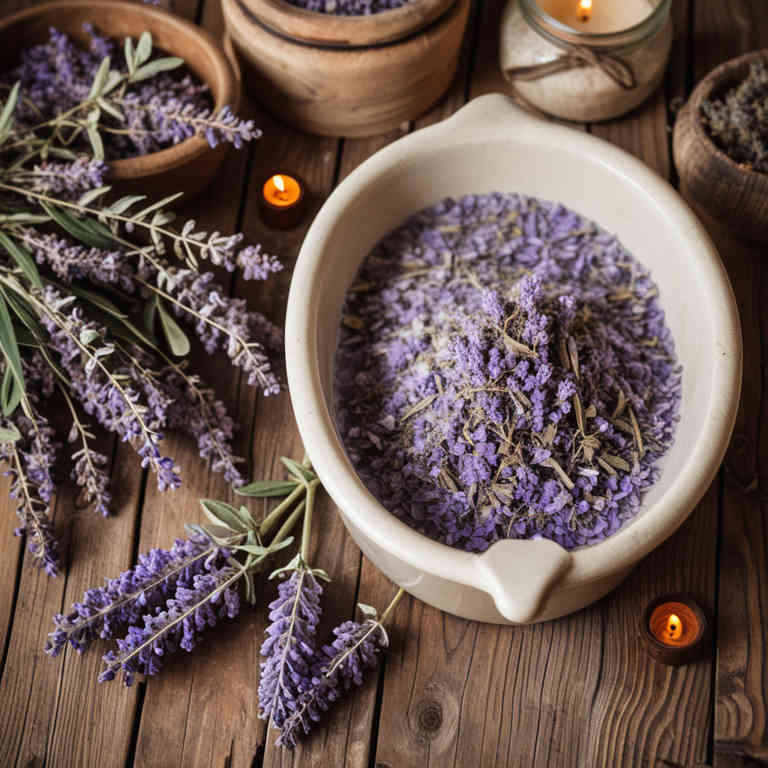
Vitex agnus-castus, commonly known as chaste tree, has been traditionally used in herbal medicine for its potential anti-inflammatory and circulatory benefits.
While it is not a primary treatment for gout, some practitioners suggest that herbal baths containing vitex may help alleviate joint pain and inflammation associated with gout by promoting better circulation and reducing swelling. These baths are typically prepared by steeping the dried herb in hot water and then using the infused water to soak the affected areas. However, it is important to consult with a healthcare professional before using vitex for gout, as it may interact with certain medications or have contraindications for some individuals.
Overall, while vitex agnus-castus may offer complementary support, it should not replace conventional medical treatments for gout.
6. Hypericum perforatum

Hypericum perforatum, commonly known as St. John's Wort, has been traditionally used in herbal baths for its potential anti-inflammatory and analgesic properties, which may offer relief for gout symptoms.
When infused into warm water, the active compounds in St. John's Wort, such as hypericin and flavonoids, may help reduce swelling and pain associated with gouty arthritis. However, it is important to note that while some anecdotal evidence supports its use, scientific research on its effectiveness for gout is limited. Individuals considering St. John's Wort baths should consult with a healthcare provider, as it can interact with certain medications and may cause photosensitivity.
As with any complementary therapy, it should be used in conjunction with conventional medical treatments for gout.
7. Silybum marianum
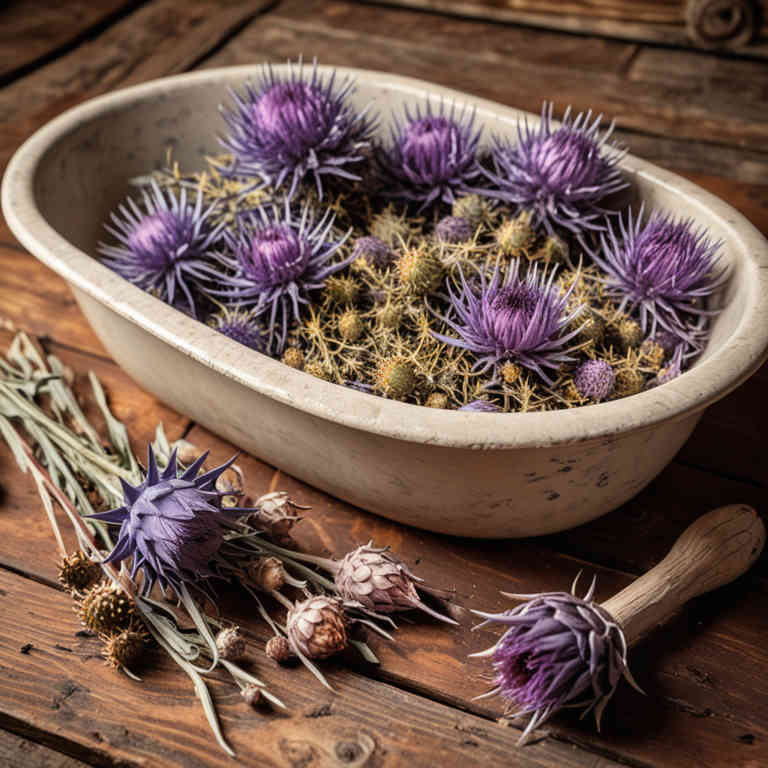
Silybum marianum, also known as milk thistle, is traditionally used in herbal baths for its potential anti-inflammatory and detoxifying properties, which may help alleviate symptoms associated with gout.
When infused into bath water, the active compounds in silybum marianum, such as silymarin, may support the body's natural processes in reducing uric acid buildup, a key contributor to gout. These baths are believed to promote relaxation and reduce joint inflammation, offering a complementary approach to managing gout pain and swelling. However, it is important to consult with a healthcare provider before using silybum marianum baths, especially for individuals with existing health conditions or those taking medications.
While herbal baths can be a soothing addition to a gout management routine, they should not replace medical treatment or professional advice.
8. Thymus vulgaris
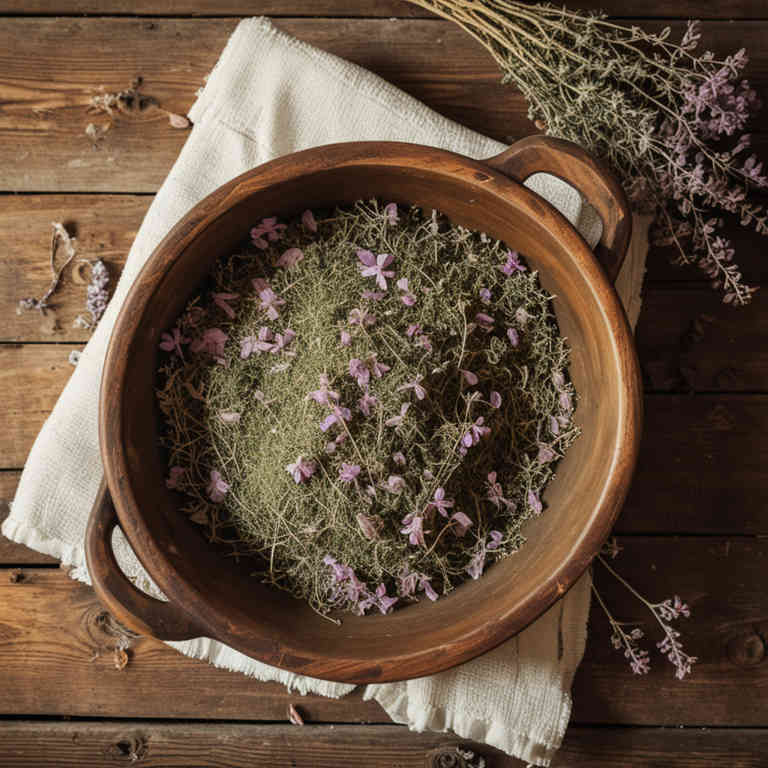
Thymus vulgaris, commonly known as thyme, has been traditionally used in herbal baths to support the treatment of gout due to its anti-inflammatory and antimicrobial properties.
When infused into bath water, thyme can help soothe joint pain and reduce swelling associated with gout by promoting circulation and easing inflammation. The essential oils in thyme, such as thymol, may contribute to its therapeutic effects by acting on the skin and underlying tissues. However, it is important to consult a healthcare professional before using thyme baths, especially for individuals with sensitive skin or existing medical conditions.
While thyme baths may offer complementary relief, they should not replace conventional medical treatments for gout.
9. Artemisia vulgaris
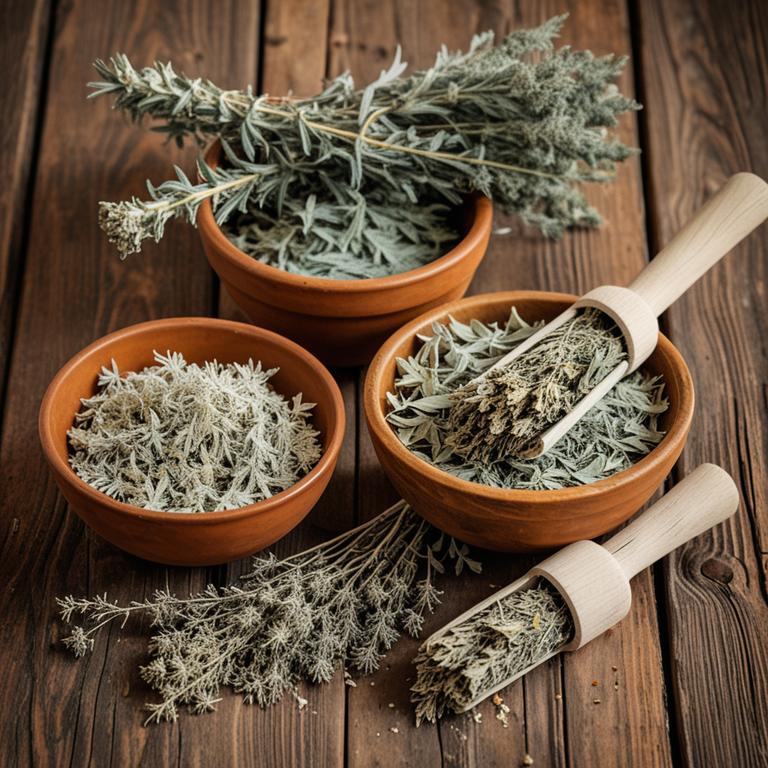
Artemisia vulgaris, commonly known as mugwort, has been traditionally used in herbal baths for its potential anti-inflammatory and detoxifying properties.
When infused into bath water, it may help alleviate the pain and swelling associated with gout by reducing uric acid levels and improving circulation. The aromatic compounds in artemisia vulgaris are believed to promote relaxation and ease joint discomfort, offering a natural alternative for those seeking relief from gout symptoms. However, it is important to consult with a healthcare provider before using artemisia baths, as it may interact with certain medications or cause allergic reactions in some individuals.
While preliminary research suggests possible benefits, more scientific studies are needed to fully understand its effectiveness for gout management.
10. Cnicus benedictus
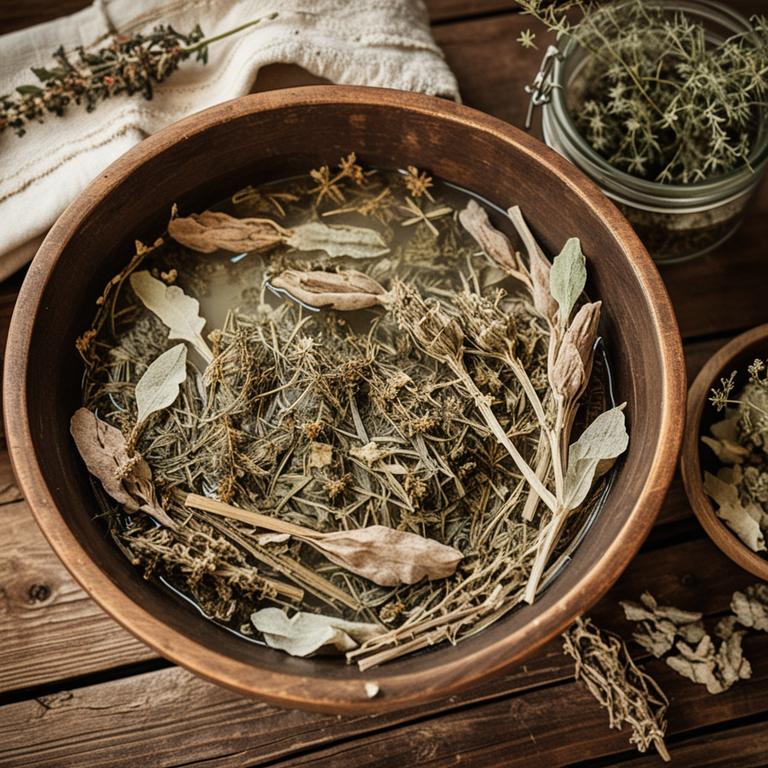
Cnicus benedictus, commonly known as St. Benedict's weed, has been traditionally used in herbal baths for the management of gout due to its anti-inflammatory and analgesic properties.
The plant contains compounds such as flavonoids and tannins, which are believed to help reduce swelling and pain associated with gouty arthritis. Herbal baths with Cnicus benedictus are often prepared by steeping the dried plant in hot water and then using the infused liquid to soak the affected joints. This method is thought to promote circulation and ease the discomfort caused by uric acid crystal buildup.
While more scientific research is needed, many individuals find relief from symptoms through the soothing effects of this herbal remedy.